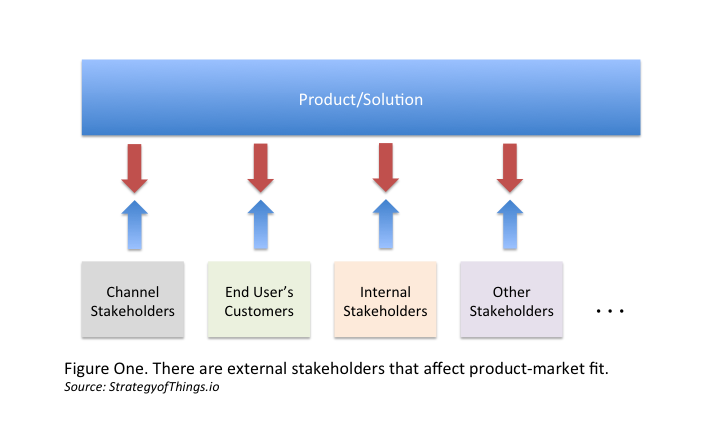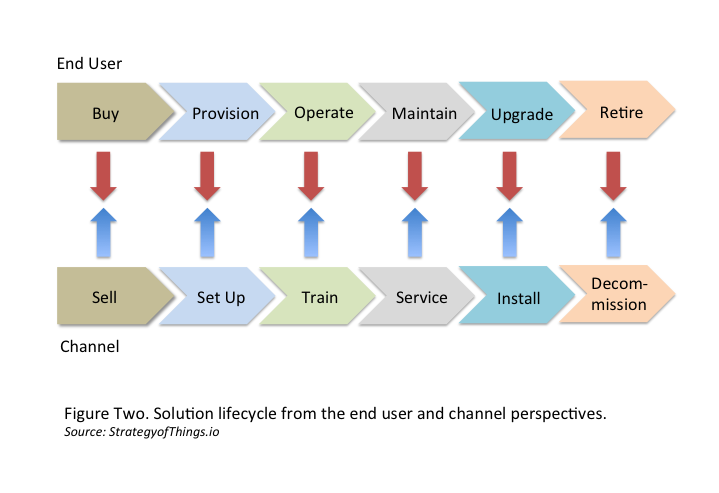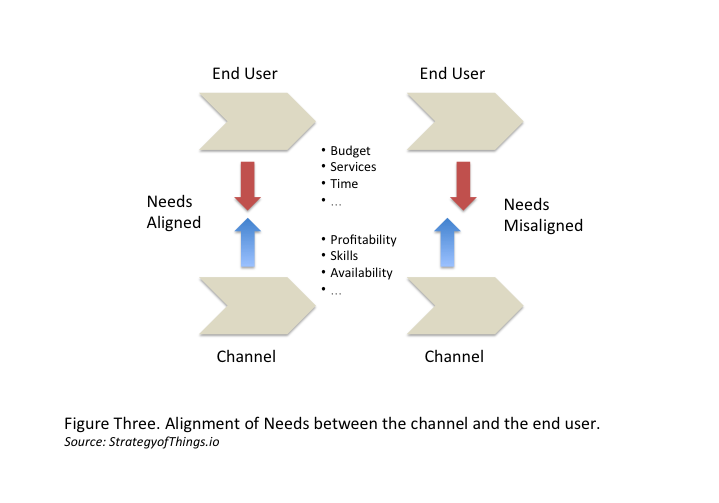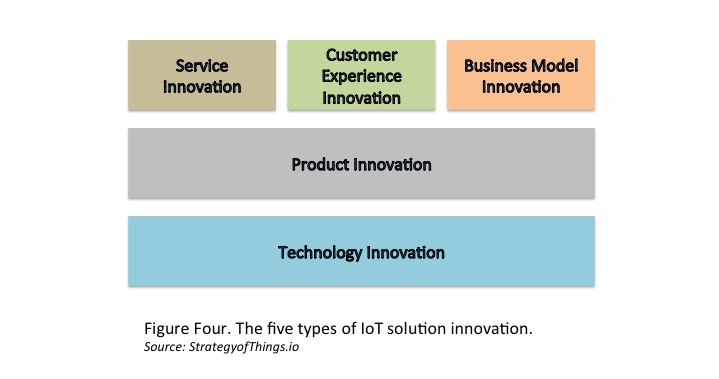Building IIoT solutions? Don’t forget about the channel!
Industrial Internet of Things (IIoT) solutions offer tremendous and disruptive value for customers, but sometimes have the unintended effect of adversely impacting the channel that it is sold and serviced through. This results in slow adoption of IIoT solutions, even if those solutions have significant and tangible customer value.
Common product-market fit mistakes
While many IIoT vendors understand the concept of product-market fit, a common mistake that many product managers make is to overlook or understate the impact of the solution on stakeholders that “touch” the solution (Figure One) beyond the end user customer. When the needs of all the primary and secondary stakeholders are aligned with the solution, market adoption is facilitated. When the needs of these stakeholders conflict, market adoption is slowed or even stopped.

One example of an external stakeholder is the channel reseller. Many manufacturers incorporate a channel strategy to market, sell and service their products in order to scale the business. The channel can be a one tier channel (manufacturer sells direct to reseller, who then resells it to the end customer) or a two tier channel (manufacturer sells to distributor, who then resells it to reseller, who finally resells it to the end customer).
Consider an IIoT based predictive maintenance solution for commercial heating, ventilation, and air conditioning (HVAC) systems. With this solution, the channel resellers will now know when the parts in the HVAC system are wearing out and a proactive service call is needed. While this minimizes HVAC system downtime, it may not be so good for the reseller. Prior to the incorporation of IIoT into an HVAC system, channel resellers may have a service agreement where they would perform routine maintenance four times a year. With the IIoT solution in place, it may reveal that they only need to come out once or twice a year to do maintenance. The reduced number of visits mean that their revenues from service calls is also reduced. Given this reality, the channel resellers have no incentive to adopt the predictive maintenance solution. More about Make or Buy an IIoT platform?
A second common mistake is to look at product-market fit from a static perspective. In fact, the product manager must look at the product-market fit over the solution’s entire lifecycle from purchase to retirement (Figure Two). At each of the stages over the lifecycle, there may be different people or organizations “touching” the solution and performing a slightly different task in support of common activities. Problems arise when the needs of each party are inconsistent or misaligned.

Conflicts, or friction arise between the buyer, the vendor and the other affected stakeholders when there is misalignment of their needs (Figure Three). These needs may include performance, cost, revenue, operating efficiency, roles and responsibilities. Some of these misalignments may be managed, while others may be more severe and require a solution redesign.

Best Practices to remove channel friction
Expand your product-market fit analysis over the entire solution lifecycle. As you design your IIoT solutions, map out the different stakeholders that touch your product, from the time it leaves your hands delivery to the time it is retired from use. Identify who they are, why the customer buys from them, the tasks they do, the value they add, and how they make their money.
How does your solution impact the services the channel provides, their value, and their financials What is changed and disintermediated?
It is not always possible to avoid disintermediation. But with this understanding, work with the channel to co-create a solution that removes the friction points, creates new value and opportunities.
Create new value beyond product innovation. Product managers must think beyond product and technology innovation. IIoT solutions can also provide business model, service, and customer experience innovation. When designing the IIoT solution with the channel needs in mind, look for opportunities to create these forms of innovation that will provide significant value for all stakeholders.

Customer experience innovation transforms the “customer journey”. It re-imagines how a customer uses a product or service. It uses data collected to create new processes, business partnerships, organizations and technology to support the new journey. Examples include Apple iPod/iTunes changes how we buy and listen to music, Uber changes how we go from one place to another, Netflix changes how we watch television, and Amazon Echo ((“Alexa”) changes how we control devices.
Services innovation transforms how, what and when a service is rendered, and who it is being offered to. It enhances a current value, or creates an entirely new value that was not possible before. A product can also be transformed into a service (e.g. car rentals). Some examples include Software-as-a-Service changes how we buy software, Uber changes how we go from one place to another, and Amazon Web Services changes businesses use IT infrastructure.
Business model innovation. A business model describes how an organization creates and delivers value to its customers. It is defined by nine parts – customer types, value to customer, sales channels, customer relationship types, revenue sources, operating resources, operational activities, key partnerships, and cost structure. Business model innovation transforms these nine parts to create to enhance or create new value to existing customers or to an entirely new customer base. Some example include Amazon Web Services “IT pay for you use” model, ZipCar’s “car sharing” model and Apple iPhone’s app ecosystem model.
Further Reading: 10 Rules Behind Amazon’s Success You Can Use on Your Digital Transformation Journey
Develop marketing programs that incentivize the channel to pursue “green field” opportunities. It is not always possible to redesign the solution to eliminate the misalignment between the stakeholders. In this type of scenario, develop marketing and channel programs that allow the channel to target new opportunities where the solution provides a significant competitive advantage. This will allow them to create new revenue streams that will offset any loss of revenues from the current business.
Recalling the predictive maintenance example in which the reseller is reluctant to offer the IIoT based solution because their services revenues would decrease. However, the reseller can offer the solution to new customers (those it never had, including those customers who use a competitor’s solutions). The new solution may give them an unique compelling competitive advantage and offset potential revenue decreases when their customers convert to the new IIoT solution in the future.
Help your channel identify suitable niches within their existing customer base. While the channel may be reluctant to offer your IIoT solution to all of their existing customers, there may be pockets within their base where your solution is in alignment with the reseller’s needs. They may have existing customers where the cost to service them is high, or the revenue impact is minimal, or are considering alternative offerings from other vendors. Help the channel understand what these opportunities are, identify the target customer profiles, and develop conversion campaigns that allow them to sell to these customer niches.
 This article was written by Benson Chan, a Senior Partner at Strategy of Things, a transformation management consultancy helping companies innovate for a hyperconnected world. He has over 25 years of scaling innovative businesses and bringing innovations to market for Fortune 500 and start-up companies. Originally the article was published here.
This article was written by Benson Chan, a Senior Partner at Strategy of Things, a transformation management consultancy helping companies innovate for a hyperconnected world. He has over 25 years of scaling innovative businesses and bringing innovations to market for Fortune 500 and start-up companies. Originally the article was published here.



